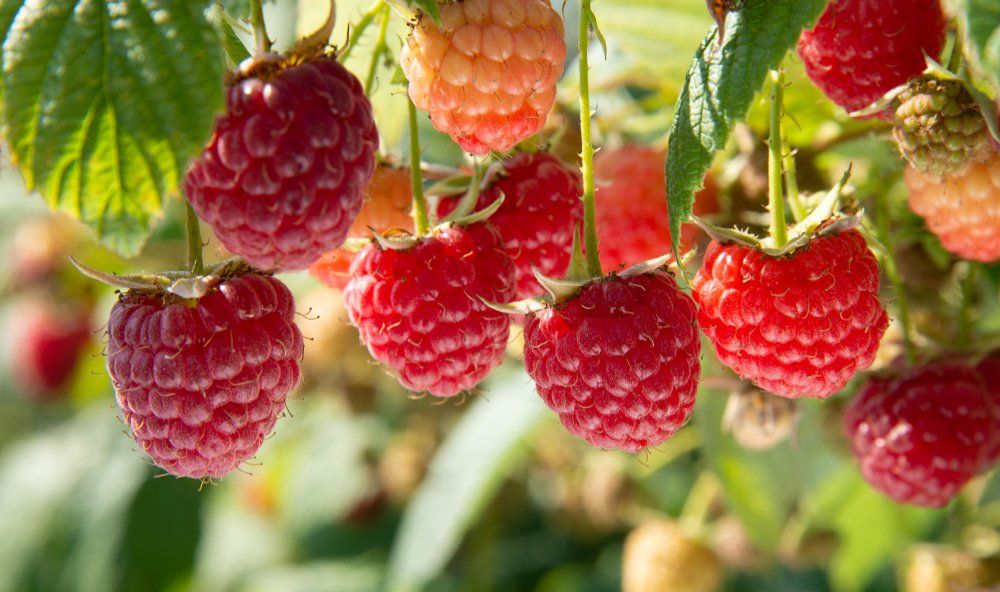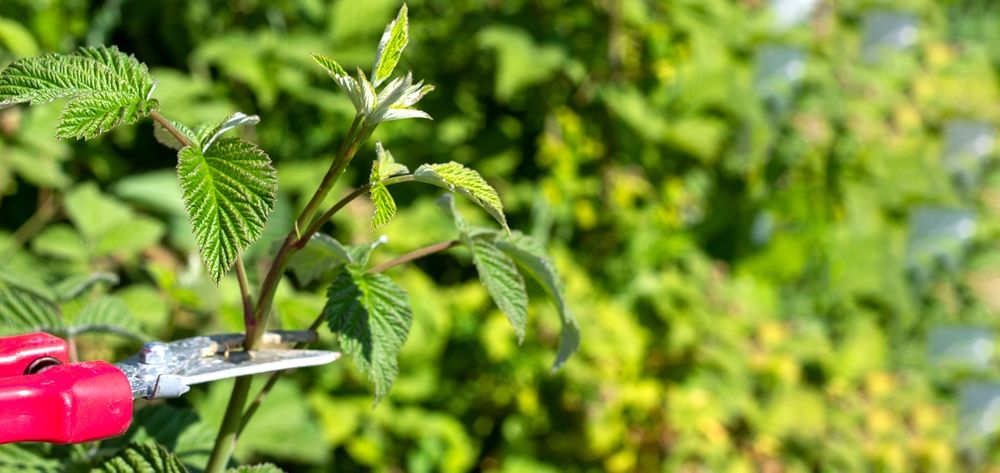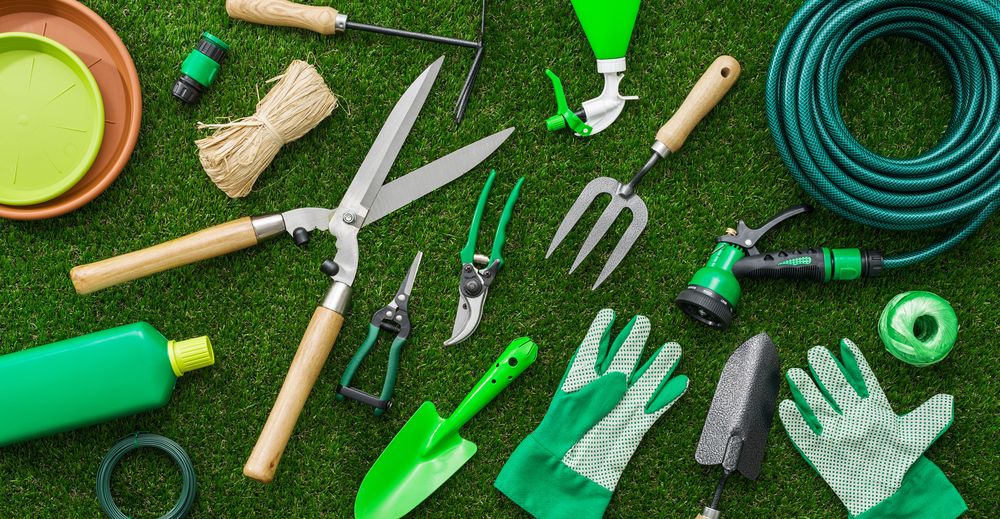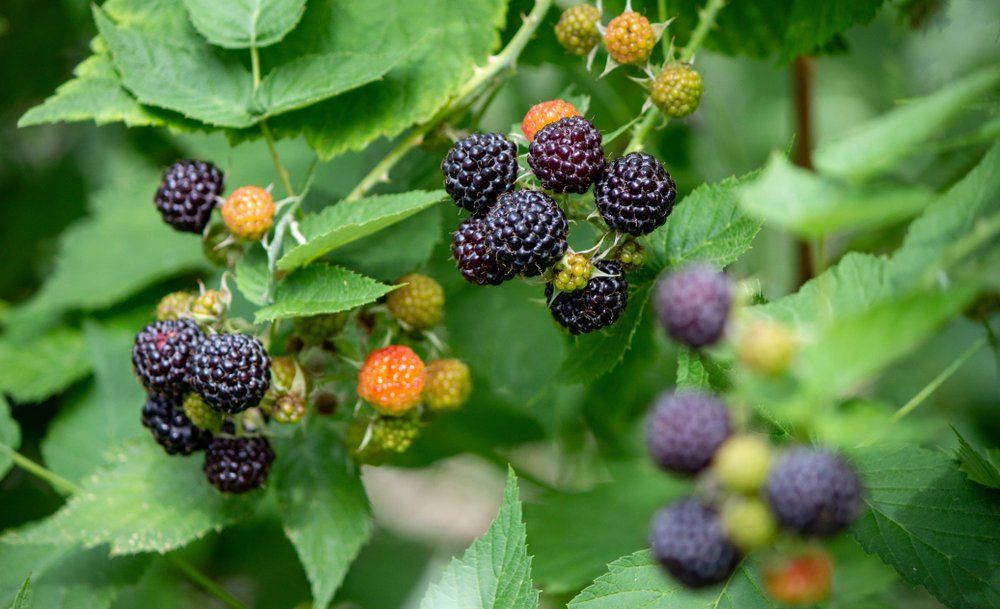
Pruning Fall Raspberries for Maximum Yields
Published: 15/12/2023 | Updated: 18/12/2025


Are you yearning for a bountiful harvest of delicious raspberries in your garden? The secret to maximizing your raspberry yields lies in proper pruning techniques, specifically pruning fall raspberries. In this comprehensive guide, we’ll explore the varieties and growth patterns of fall raspberries, as well as the importance of pruning for maintaining fruit yield, preventing pests and diseases, and improving garden appearance. Get ready to transform your raspberry patch into a fruitful paradise!
Key Takeaways
-
Understanding the growth patterns and varieties of fall raspberries is essential for successful cultivation.
-
Pruning helps optimize fruit yields, prevent pests and diseases, and improve garden aesthetics.
-
Proper pruning techniques must be used to ensure a high yield of quality fruit from summer or fall crops. Trellising may also be necessary for optimal health & productivity.
Understanding Fall Raspberries: Growth and Varieties
Raspberries are a delightful late-season addition to any garden, offering an abundance of flavor and vibrant hues. To get the most out of these fruits, it is important to understand their growth cycles as well as the various types available for planting in your space. With this knowledge, you’ll be able to equip yourself with the ideal raspberry plants suited for your own particular gardening needs and provide them with suitable care that will enable optimal success.
Fall-Bearing vs. Summer-Bearing Raspberries
Raspberries have a key difference between them in terms of whether they are fall-bearing or summer-bearing. Fall-bearing raspberries generate fruit on fresh canes at the end of summer, while those that bear during summer produce their crop off the second year’s stems earlier into this season. This striking pattern for producing fruits affects how one prunes these plants too. Trimming all its canes down to ground level is suggested from November through March when it’s dormant if you want just a single autumn yield whereas double cropping with both harvest times requires distinct cutting techniques which will be expounded later here.
Popular Fall Raspberry Varieties
As you delve into the world of autumn raspberries, there are many different types to pick from. Autumn Bliss, Glen Ample, and Polka are some of the most commonly harvested varieties this season. These same options can also be grown as summer raspberries with proper pruning techniques in place for optimal outcomes.
To ensure your garden produces a good yield of berries, it is important to understand each type’s growing habits so that correct care and pruning may be applied appropriately throughout their growth cycle - both during the spring/summer months or fall harvest period alike.

The Importance of Pruning Fall Raspberries
For a successful harvest of fall raspberries, it is important to practice proper pruning. This involves tailoring the approach based on whether you have summer- or fall-bearing plants, as their fruiting patterns differ from each other. In this guide, we will discuss when and how best to prune for an abundant yield in terms of both fruit and vigorous plant health.
Tools required along with protective gear that must be worn during the process are also discussed below.
Understanding your specific type of raspberry bush growth allows one to maximize returns while optimizing garden aesthetics through appropriate techniques for cutting back these types of berry bushes at any stage throughout the Summer or Fall season successfully!
Maintaining Fruit Yield
Raspberry plants must be pruned regularly to guarantee a plentiful harvest of succulent raspberries each season. The process involves cutting away old, unproductive canes and stimulating the growth of new branches that will result in higher yields. If this action is not taken, it may lead to fewer fruits on your crop due to overcrowding or even bring about disease and pest issues which would hamper production. Pruning done properly should ensure strong fruit-yielding raspberry bushes for years ahead.
Preventing Pests and Disease
Taking care to prune properly is key to maintaining a healthy raspberry patch. Pruning can be done by getting rid of any weak or diseased canes and improving the airflow around your plants, which will lessen the chance that pests and diseases start developing there. This ultimately leads to more robust growth as well as fewer potential health threats from disease carriers like insects and fungi.
Regularly trimming your raspberry bushes makes them look better while also guarding against unwanted problems such as bugs, molds, and other maladies affecting their well-being. This way you keep on top of keeping each plant in peak condition!
Improving Garden Appearance
Maintaining a raspberry patch involves more than just reaping the rewards of juicy berries. Pruning plays an important role in improving its visual appeal. Pruned canes are kept to ideal heights, helping prevent any excessive growth or overshadowing from occurring as well as decreasing diseases that may spread quickly throughout the garden area. Not only does proper pruning allow for harvesting plentiful fruits, but it also results in aesthetically pleasing surroundings.

Tools and Protective Gear for Pruning
To start your pruning of fall raspberries, it is vital to have the right equipment at hand. Some essential items you need are gloves, shears, and loppers for cutting back raspberry canes with ease. To ensure safety while trimming these thorny branches, protective gear such as thick gloves, long sleeves, and eye protection must also be worn when handling them.
With all the proper tools in place, you will now be able to confidently prune away on those raspberries, which would then lead to a healthy output from their growth process going forward!
When to Prune Fall Raspberries
Timing is of utmost importance when it comes to pruning fall raspberries. To determine the ideal time for this, you must first decide which technique best suits your needs. Summer fruiting varieties should typically be cut back after berry harvesting in late summer or fall as a precautionary measure. Maintaining their size by trimming down any overly long primocanes during February (late winter) can also prove beneficial. The following paragraphs will discuss various techniques associated with both early spring and late winter pruning of these specific berries.
Early Spring Pruning
At the beginning of spring, it is a great time to prune away any dead or damaged canes that may hinder your raspberry patch from growing. Doing so clears space for new and vibrant growth to develop during the upcoming season. Pruning in early spring encourages strong development among your plants while ensuring they start on the right foot in terms of health and productivity.
Late Winter Pruning
Pruning during late winter brings a few advantages when it comes to specific techniques, for example, double cropping. Cutting the canes at this time promotes the production of new ones which will bear fruit in the following harvest season, thus ensuring multiple crops throughout the year and bigger yields from your raspberry plants. Pruning after winter helps keep them healthy too, aiding bountiful harvests overall!
Pruning Techniques for Fall Raspberries
Now that we’ve looked into the why and when of pruning fall raspberries, it is time to explore different pruning methods based on your gardening goals. Whether you wish to grow a single harvest in autumn or plan on double-cropping to have both summer and winter crops from your raspberry patch, there are specific techniques suited for each choice. In this portion of our discussion, let us provide detailed information regarding these options to help you make the right decision regarding your berry crop’s trimming needs.
Single Fall Crop
When preparing for a fall crop of raspberries, pruning all the canes to ground level in late March is essential. This helps stimulate new buds from beneath the surface of the soil and reduces competition between plants that are competing for resources. Promoting healthier plants as well as an even greater yield come fall harvest time. Pruning these particular types of bearing raspberries not only increases fruit production but also ensures stronger growth during upcoming seasons.
Double-Cropping for Summer and Fall Harvests
For gardeners seeking a longer harvest period with both an early summer crop and fall harvests, double-cropping is the answer. All canes that bore fruit last year should be trimmed to three-quarters of their length for vigorous new ones to grow out while promoting a smaller summer yield but a larger autumn abundance. By pruning only those that already produce fruit, you’ll enjoy greater bounty over multiple seasons without sacrificing any of your produce!
Thinning and Maintaining Your Raspberry Patch
Raspberry patch maintenance is key for healthy growth and to prevent overcrowding. By thinning out your raspberry plants, you can maintain their health as well as increase the stock of new ones by removing suckers and planting them somewhere else. To effectively do this while still preserving all useful information on pruning, here are some tips concerning how best to manage your raspberry patch:
First, when dealing with existing plants that have already been established in a particular area, it’s important to make sure they remain healthy by carefully pruning away any dead or overgrown branches/ stems, etc. One should take into account adding additional raspberries during periods like winter when there may be more available space due to fewer growing fruits around! Lastly, replant the extracted squirrel from an original plant in another location that has enough nutrients such as soil type & sunshine availability to both old and newly introduced raspberry stocks.
Removing Suckers
If left unchecked, the new shoots that develop from raspberry canes - known as suckers - can congest and impede proper growth in a given patch. Such overcrowding reduces available resources like nutrients, sunlight, and water, which all negatively impact how robust your plants become.
To ensure optimal productivity of these shrubs, remove any rogue cane-borne sprouts outside the designated area immediately.
Replanting Suckers
When trying to increase the raspberry plant stock, carefully dig around sprouts and extract a portion of its roots for replanting. Place each sucker in an already-prepared hole at another location with all their roots covered up by the soil. Immediately water them after planting so that they can get accustomed. Replacing suckers is a great way to grow more raspberries in your garden while also having bigger harvests!
Trellising and Supporting Raspberry Canes
Having a trellis system in place for your raspberry canes is essential to the health and success of your plants. The V-trellis method helps provide extra stability, boosts light absorption, increases airflow, and minimizes the chances of fungal illnesses occurring. These benefits make this design an invaluable tool when it comes to caring for raspberry patch crops effectively.
A robust support structure will ensure that each cane gets what it needs to develop optimally so it stays healthy throughout its life cycle. Utilizing a well-designed trellis scheme gives you peace of mind knowing you have provided effective assistance in raising strong and resilient raspberry bushes!

Caring for Black and Golden Raspberries
When growing a garden of raspberries, don’t forget about the unique black and golden varieties for some added novelty. While caring for these special types requires similar pruning techniques to those used on red berries, it is still important to be aware of any particular considerations necessary with them.
By providing suitable care and upkeep, you can reap not only traditional red raspberries but also black raspberry bushes as well as their golden counterparts!
Prune Your Way To Raspberry Glory
Pruning correctly is essential for a successful raspberry crop and keeping the garden thriving. By familiarizing yourself with fall raspberries’ growth patterns and types along with applying effective cutting techniques combined with proper maintenance of your plants, you can expect plentiful harvests year after year! And if you need a hand with those raspberries, head over to ShrubHub for super-helpful advice, and let's get those raspberries growing like crazy! Happy pruning!
Frequently Asked Questions
Do raspberries need to be cut back in the fall?
It is important to prune raspberries in the fall and spring, cutting away dead canes for increased growth of new ones. Resist any urge to take out floricanes that have fruited as these aid the berry plant’s survival through winter.
How far back do you cut raspberries in the fall?
To foster a bountiful harvest of raspberries in the following season, pruning is key. All dead canes should be removed and weaker ones trimmed down to leave 8-10 strongest stems. In late fall or early spring, while in their dormant stage, all remaining cane growth needs to be cut right back to ground level for successful regrowth. This practice ensures strong raspberry canes year after year!
How do you prepare raspberry bushes for the winter?
To help raspberry bushes survive winter, don’t prune them. Instead, keep the canes and plants hydrated and eliminate any dead or sick ones. For optimal results, cut off aged vegetation, and bind them together securely with twine at the top of each bush before disposing of what was trimmed away by burning it. Cleanse to sterilize it all afterward as well as fertilize.
What are the main differences between fall-bearing and summer-bearing raspberries?
Raspberries that bear fruit in the fall are on canes made of fresh wood, whereas those produced during summer come from second-year canes. Thus, different techniques for pruning and harvesting must be employed depending upon which type of raspberries one is growing. Either fall-bearing or summer-bearing.
What tools and protective gear do I need for pruning raspberries?
When pruning raspberries, safety should be a top priority. Appropriate clothing such as gloves and long sleeves is necessary along with protective eyewear to prevent injury. Pruning shears or loppers can also help make the task more effective when done properly.


